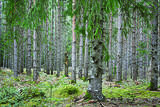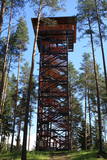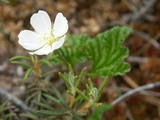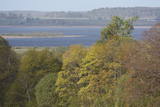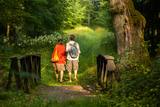| Nr | Name | Beschreibung |
|---|---|---|
|
Der Slītere Nationalpark (2000 gegründet) ist praktisch ein Freilichtmuseum, welches die Entstehungsgeschichte der Ostsee erzählt. Die geologische Entwicklung kann man in den Blauen Bergen (Zilie Kalni) von Slītere sehen, die 20 bis 30 m höher sind als die Küste des Baltischen Eissees von vor 10.000 Jahren. Die Stiebri Berge
(Stiebru kalni) entstanden vor 8 bis 9.000 Jahren, während das Litorina-Meer Europas größte Dünenwälle mit Talsenken dazwischen schuf. Das geschah vor 4.000 bis 7.000 Jahren. Das milde Klima von Nordkurzeme ist der Grund, warum es so viele seltene Pflanzen in dem Naturpark gibt – mehr als 860 insgesamt. Von gewissem Wert für die Bewahrung dieser Schätze war die Sowjetische Militärmaschinerie, sie lagen verlassen hinter Armeebasen und anderen militärischen Objekten in diesem Gebiet. Die Anwesenheit des Militärs bedeutete, daß das Gebiet des heutigen Slītere Nationalparks für 50 Jahre größtenteils ungestört blieb. Im Nationalpark befindet sich eins der beliebtesten touristischen Ziele in Kurzeme – das Kap Kolka, das jedes Jahr von mehr als 50.000 Touristen besucht wird. Während des Frühjahrsvogelzugs durchziehen stündlich mehr als 60.000 Vögel das Kap. Entlang der Küste der Ostsee befindet sich die sogenannte Livenküste, die sich von Kolka über Sīkrags bis nach Ovīši erstreckt. Fischerdörfer und andere Kulturdenkmäler, die von der weltweit kleinsten ethnischen Minderheit, den Liven, geschaffen wurden, findet man hier. Touristen können interessante Naturpfade, Fahrradrouten, Aussichtstürme usw. erkunden. Das Besucherzentrum befindet sich im Slītere Leuchtturm. |
||
|
This is the thickest European wild apple tree in Latvia. It is just lovely when it is blossoming.
|
||
|
Līdz 40m augsta ar mežu apaugusi Gaujas labā pamatkrasta nogāze ar vairākiem smilšakmens atsegumiem. Viens no tiem atrodas nogāzes lejasdaļā un veido 7m platu 5m dziļu nišu. Otrā krastā – vairākus metrus augstais Leimaņu iezis. Abi atsegumi atrodas aiz Amatas ietekas.
|
||
|
Lake Salājs is full of bays and islands. Alongside Lake Little Solojs, which is next to Lake Salājs, is the Milka castle hill and a leisure facility there. This is a beautiful area, and it is protected for environmental purposes. |
||
|
Ja Rušona ezeru iepazīstiet ar laivu, tad var apmeklēt Lielo salu (ezera rietumdaļā),kur (augstākajā vietā) ir jāuzmeklē ap 1,2 m augstais akmens. Konstatēts, ka tā apkārtnē un uz virsmas kurināta uguns. Atrastas arī senlietas. Nostāsti vēsta, ka akmens virsmā bijušas iekaltas zīmes (nav saskatāmas) un pie tā upurēti jēri. Tikai nedodieties ezerā, ja ir vai gaidāms stiprs vējš! Rušona ezera salas ir dabas liegums. |
||
|
~6,000, including nearly 300 types of dahlias, 120 types of azaleas, and 100 types of outdoor rhododendrons.
The conservatories of the botanic gardens contain various exotic and tropical plants and fruit trees, including lemon, banana, pineapple, fig, olive, avocado and coffee bean plants. There is a broad collection of cacti, as well as the largest collection of palm trees in Latvia. Outdoors, there are lots of winter-resistant plants, medicinal plants, and poisonous plants. The plants are arranged in systematic groups – something which is typical only of the botanic gardens of universities. This is the only place in Latvia where you can see so many flowering magnolias in a single place in the spring.
Outdoors you will find the Sweet Chestnut (Castanea sativa), the Gingko (Ginkgo biloba), the Dawn Redwood (Metasequoia glyptostroboides), the White Mulberry (Morus alba), and the Common Walnut (Juglans regia). The conservatories include several types of the highland tamarin (Araucaria bidwillii and A. heterophylla), the Wollemia Pine (Wollemia nobilis), the Moreton Bay Fig (Ficus macrophlla), the Water Lily (Victoria regia), etc.
|
||
|
Kaziņmežs (Ziegenwald) – ein kleines Waldmasiv das sich im Osten von der
Kreuzung der Strassen Mazirbe-Cirste und Kolka-Ventspils befindet. Ein
sagenumwogener Platz. Wenn man durch den Ziegenwald geht, kommt man an
der Kreuzung der Strasse Kolka-Ventspils (P 124) raus.
|
||
|
Atrodas 6,5 km ziemeļos no Cirgaļiem, P 23 ceļa malā, Ziemeļgaujas aizsargājamo ainavu apvidū. Torni vērts apmeklēt pavasara laikā, kad no tā redzamas applūdušas Gaujas palienes. |
||
|
Augstā un purva vidusdaļā - pārejas tipa purvs, putniem nozīmīga vieta. Apmekļējumiem nav piemērota infrastruktūras trūkuma un sugu aizsardzības nolūkā. |
||
|
Nature restricted area includes eastern side of the lake with Lanupe River and North-east and South-east coastal areas. Restricted area has been established for protection of birds and floodplain meadows of the lake. To see the nature restricted area visitors do not have to enter it. There are great view points with wind generators of Grobina on the background from the road Vecpils – Rava – Aistere. Coastal areas which are not included in the restricted area are perfectly suitable for bird watching. There is located the smallest city by its population in Latvia to the South from the lake.
|
||
|
Ģeoloģiskā taka sastāv no trīs saistītiem posmiem: „Melturi – Kārļu zivjaudzētava”, „Kārļu zivjaudzētava – Zvārtes iezis” un "Zvārtes iezis - Veclauču tilts". Amatas senleja veidojusies vienlaikus ar Gaujas senleju leduslaikmeta beigu posmā un pēcleduslaikmetā, ledāja kušanas ūdeņiem plūstot uz Gaujas ieleju. Gaujas NP teritorijā Amatas senielejas dziļums sasniedz 50 metrus un platums palielinās līdz apmēram 1-1,5km.
Augstas kraujas (vairāk ne kā 40 metru), kurās redzami augšdevona Pļaviņu svītas dolomītu un augšdevona Amatas un Gaujas svītu smilšakmeņu atsegumi, mijas ar mežiem apaugušām, 3-16m augstām stāvām terasēm.
Amatas senieleja ir nozīmīga ne tikai ar savām dabas ainavām. Tās krastus grezno dolomīta un smilšakmens atsegumi, kas atklāj zemes vēstures lappuses 350-400 miljonu gadu tālā pagātnē, kad Latvijas teritoriju klāja jūra.
Velobraucieniem taka nav piemērota!
|
||
|
1,8 km garā taka atrodas neparastā vietā – uz Cirīša ezera salas. Tās galvenās vērtības ir augu valsts un dzeņveidīgo putnu daudzveidība. Viens no apskates objektiem ir Upurkalns – sens pilskalns. Taka labiekārtota, izveidoti informācijas stendi, atpūtas vieta. Lai nokļūtu uz salas, no vietējiem jānomā laiva, vai jādodas ar savējo. Atrodas dabas parkā „Cirīša ezers”. |
||
|
Diese Quelle befindet sich 1,3 km nordwestlich von dem Zentrum von Aknīste, in einem kleinen Seitental des Flusses Dienvidsusēja. Diese Quelle ist als eine Gesundheitsquelle schon seit alten Zeiten bekannt. Das Wasser der Quellen, die Richtung Osten ausfließen, soll Heilkräfte besitzen. Das gilt besonders für den Ostermorgen, wenn in der Quelle Augen gewaschen werden. Das Wasser der Quelle enthält Eisenverbindungen, von denen die braunen Ablagerungen (als Folge der Tätigkeit der Eisenbakterien) zeugen. Neben der Quelle befindet sich ein Stein mit einer kleinen Vertiefung, dieser Stein könnte früher ein Kultstein gewesen sein. Am Rand des Tals wächst eine heilige Linde. Die heilige Quelle von Saltupji kann mit Recht als eine der hervorragendsten Quellen in Lettland angesehen werden. |
||
|
Atrodas 3,7 km garās laipu takas vidusdaļā. No torņa paveras viena no Latvijas izcilākajām augstā purva ezeriņu un lāmu kompleksa ainava. Tornis ir populāra saullēktu un ziemeļblāzmas fotografēšanas vieta. |
||
|
Im Park des Orellenhofs, der für seine großen Urbäume bekannt ist, deren Stämme mit dem lebenden und dem toten Holz vielen auch bereits vom Aussterben bedrohten Arten eine Heimstatt bieten, wurde ein Urbaumpfad eingerichtet. Im Park befindet sich das einzige in Lettland erhaltene Herrenhaus aus Holz vom Beginn des 18. Jh.
|
||
|
From the Asote castle hill, which is on the right bank of the Daugava River near Jēkabpils, there is a fine view of the Daugava River valley, the Ābeles Island, and the Kaupre castle hill that is at the northern end of the island.
|
||
|
The rock is along the main street of Krāslava and is found at Augusta Street 12. After major reconstruction of the city’s infrastructure, the rock was successfully integrated into the surrounding landscape. The rock is 2.8 m long, 2.2 m wide and 700 cm high. It once served as a border stone for the village of Krāslava. It was placed there in 1729 to commemorate the day when the noble Plater dynasty bought Krāslava. The dynasty’s seal is engraved in the side of the rock along with the date when it was installed. Legend has it that Polish King Augustus II dined at the rock after a hunt, and that is why it is known as Augustus’ Rock. |
||
|
Ap 9 km garā taka (vienā virzienā) sākas Skaņākalna dabas parkā (Mazsalacā) un beidzas pie Ramatas. Tā iepazīstina ar Salacas ielejas dabas parka nozīmīgākajām vērtībām – smilšakmens atsegumiem (Skaņaiskalns, Dauģēnu klintis u.c.), alām, nozīmīgu izmēru laukakmeņiem u.c. Taka marķēta. Tajā izvietoti informācijas stendi, norādes. Jāpadomā par loģistiku – kā nokļūt sākuma punktā. |
||
|
Latvijas Valsts mežu laivu bāzē, kas atrodas Kaņiera ezera dienviddaļā (redzama no Lapmežciema – Antiņciema ceļa) kopā ar laivu bāzes ēku apvienots skatu tornis, no kura lieliski pārredzama ezera austrumdaļa. |
||
|
Das Naturreservat ist eine der größten Moorflächen des Baltikums. Es wurde in das Verzeichnis bedeutender Feuchtgebiete gemäß der Ramsar Konvention aufgenommen. Im Moor von Teiči wurde der etwa 3 km langer Lehrpfad Sildi angelegt, der nur in Begleitung von Reservatsführern nach Anmeldung besucht werden darf. Es können verschiedene Moortypen (über Stege), Moorseen (Sildi und Isliena), Wasserlöcher und Kleingewässer und moortypische Arten sowie die Moorinsel besichtigt werden. Vom Aussichtsturm in Siksala kann man den größten Teil des Moores überblicken. The trail can be visited only with the Nature Conservation Agency employee's escort from June 1 until October 31. |
||









